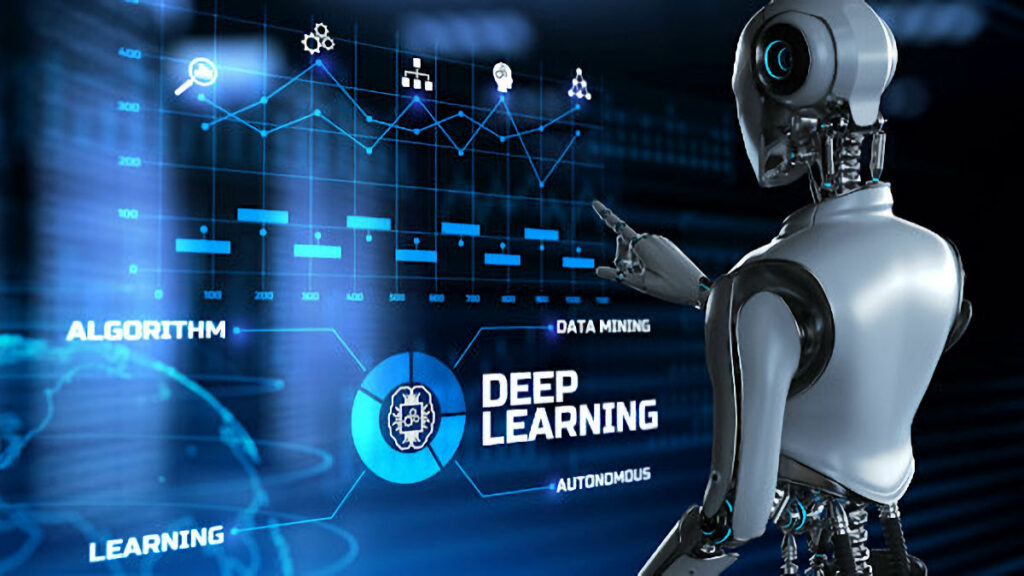Articles

Shift the way you think about artificial intelligence.
Mortgage Professional America, August 22, 2019 by Kimberley Greene
AI doesn’t have the ability to do everything, and successful implementation and adoption of AI requires mortgage professionals to change their perspective
A conversation about the future of technology, mortgage or otherwise, would be incomplete without mention of artificial intelligence (AI)—which is very different from other types of technology. AI is all about self-learning and self-improving; anticipating patterns and behaviors based on the patterns and behaviors in the past.
Some mortgage professionals think that AI can do anything, but Neil Sahota, IBM Master Inventor and United Nations AI subject matter expert, says that that that there needs to be a shift in how people think about the technology.
“Machines can only know very specific things, and they only do what we can teach them. And to teach a machine, you have lots of good data for the machine to learn from. So if you want to build an AI bot, you can’t just say, ‘here’s five loan documents, now go out and talk to clients.’ It doesn’t work that way. You probably need, 5,000-10,000 different types of loans with different types of outcomes, and let the machine learn from it,” Sahota said. “But then you need the people. You need subject matter experts to help teach the machine the concepts and things that can happen, so the machine can learn. And then you keep training it.”
Sahota recently joined the board of advisors at mortgage CRM platform Insellerate in order to enhance the company’s AI technology and strategy. Rather than looking at the “sexiness factor” of a new technology, Sahota said that Insellerate identifies the inefficiencies and pain points in the mortgage process, and is focusing on solving those problems through the use of certain technologies, such as AI. It’s a really refreshing attitude, Sahota said, and one of the big things that attracted him to working with the company.
Some of the implications for AI are really mind-blowing. Artificial empathy is something that Sahota calls one of the “hot and fast-growing” areas within artificial intelligence, where machines can respond dynamically to a person’s emotional state. If a borrower is frustrated or angry, the machine or bot might try to be soothing and calming. Emotion weighs heavily in the homebuying process, and being able to tap into that side of the process would be a huge breakthrough. Part of that is neurolinguistics, where the machine can learn whether or not a person is being genuine. There’s also solid evidence that people are more honest with machines because they don’t feel as if they’re being judged in any way, which may not be the case when speaking to personal advisors.
“If you think about things like income sources and household income, we’ve actually seen where the machine can do a better job of identifying when a person is telling the truth or not, and that can be either through voice or through body language,” Sahota said.
Looked at another angle, machines can also identify patterns that aren’t necessarily directly tied to an individual borrower, but to specific data sets. A person claims a certain income, for example, and that income happens to be public information, but it doesn’t match with that person’s stated job title and/or position. Little things might not be a telltale sign on their own, but in the aggregate, a different picture of the borrower comes to light.
Joe Langner, CEO of cloud-based digital lending platform Blue Sage, says that lenders especially need to think of AI in terms of advances in workflow. It goes beyond writing rules and process automation.
“There’s a lot of buzz about AI, but a lot of confusion too,” Langner said. “Where I see the future of software is augmenting AI to help the lenders directly assist in helping the customer get the best product for their needs. Rather than just filling out a form, having the software prompt the end customer, asking if they have this and that.”
The fear of technology replacing people is a deep one, and with AI, there are direct implications when it comes to the less profitable administrative tasks. In the short-term future, the implications of AI include offloading some of these tasks associated with the mortgage process, as well as following up with borrowers when information is missing, incomplete, or otherwise unsatisfactory. As certain roles cease to exist, however, those people can be retrained for other things, perhaps more complex, higher-value work.
Again, adoption requires changing the way lenders and originators assume that team members should work. Even then, it’s not a one-tech-fits-all solution.
“Don’t get me wrong; AI’s not a magic bullet solution, you can’t do everything. It still needs to be taught by people,” Sahota said. It probably won’t get to the point where it can handle more complex files or circumstances that need out-of-the-box lending solutions. It can, however, identify those cases faster, and redirect the originator’s time toward those cases.
When it comes to implementation of AI, decision-makers can start by recognizing the levels to which individual originators and their borrowers are already engaged with AI in both their personal and professional lives, says Jim Bandy, director of sales at Speedpay, an ACI Worldwide company.
Everyone has an opinion on which channels and companies provide better experiences than others, he said, and by assessing the level of comfortability and interaction, then clearly understanding the experiences and work streams of mortgage customers and professionals, companies can make informed decisions on where to integrate AI.
“Many companies are investing in plotting out detailed customer journeys to understand where AI might help make the customer’s experience easier while also delivering value to the company, whether that’s through increased NPS or reduced operational expenses. Some of the best AI I have encountered deliver both,” Bandy said.
He adds that the range of AI options is broad, and determining how to integrate any of it into existing systems can seem daunting.
“Here’s where the adage of ‘more sizzle than steak’ can apply, because the latest ‘thing’ doesn’t always deliver the best results,” he said. “Mortgage professionals should seek out advice from trusted partners who can share actual results and help bring them the best value for their organizations.”
Langner hopes to see AI eliminate much of the friction that currently exists in the process for everyone.
“The lending process is extremely complicated, so if technology can make it a simpler and more risk-free process, those who can do that will win in the marketplace,” he said.

